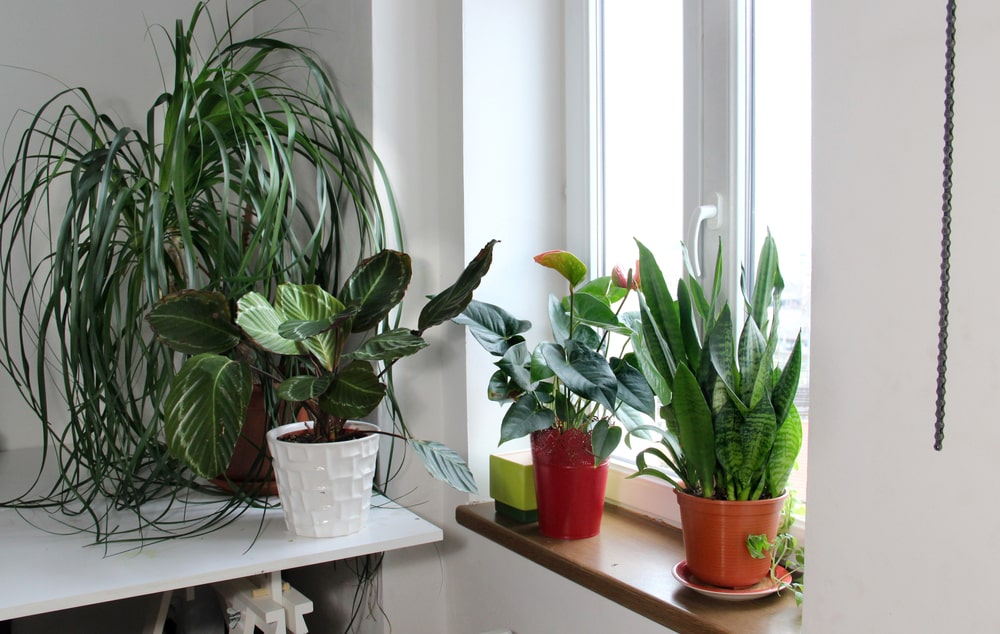SUMMER VACATION TIME IS OVER FOR OUR HOUSEPLANTS TO BE OUTSIDE
Here we are in late September and fall is officially here on the 23rd. It’s time to be thinking about prepping our tropical houseplants to come back inside.
This Saturday is FALL GARDENER’S FAIR – OUR HOUSEPLANT EXPERTS WILL BE CONDUCTING A FREE EDUCATIONAL SEMINAR ON “MOVING HOUSEPLANTS BACK INSIDE.” This would be a great opportunity to come and learn and bring all your questions about houseplants.
Here is just a synopsis of what will be covered in more detail with our seminar on the 21st:
- If your houseplants spent the summer outside, they may have picked up a few friends. In addition, with the favorable growing conditions outside – increased light, humidity, and air circulation – your plants may have gotten a little too big or unshapely over the growing season. A little judicious pruning may be all your plants need. However, it is a jungle out there! Here are some tips on houseplant care as plants return to the unnatural environment of the great indoors.
- Plants will have to adapt to the different environment of shorter days and dry centrally heated air. Consequently, water use by the plant will change, so be sure to check carefully for dryness before watering. If your home is very warm and dry, you may need to water more frequently; if cooler and dimmer inside, the plants may retain moisture longer. For most houseplants, only fertilize during periods of active growth.
- Fall is not the best time to repot unless a plant is desperate for more space. Most indoor plants slow their root and foliage growth over the winter. If you do repot, choose a container only one inch larger in diameter.
- Check your plants carefully ( leaves and stems) for signs of plant pests such as mealybug, scale insects, mites, aphids, caterpillars, etc. If you see pests or find pest damage, like chewed or stipples leaves, insect droppings, sticky leaves, or webbing, treat plants before bringing them inside.
- Before bringing out the chemicals, try a few simple home remedies. For easily dislodged insects like aphids, crickets, Daddy-longlegs, or spiders, try spraying them off with a stream or spray of water from the hose. Caterpillars and grasshoppers can be picked off by hand. Snails and slugs are usually active at night, so use a flashlight to catch them at work, and remove them by hand, also.
- Critters that have taken up residence in the soil can be removed by “cleaning” the root ball with a chlorine bleach drench (4 tablespoons of bleach per 1 gallon of water), or by submerging the entire root ball in a bucket of water for 30 minutes or more – air-breathing insects like ants, pillbugs, centipedes, etc., will either float to the surface or drown.
- A mild infestation of mealybug or scale can be treated by removing any pests you see with a cotton swab dipped in rubbing alcohol. Treated plants should then be isolated and watched carefully for signs of re-infestation, removing any new pests until the population has been completely eradicated. Some fuzzy-leaved or very thin-leaved plants will be damaged by contact with rubbing alcohol, so test a leaf before treating the entire plant.
- For heavier infestations of mites, mealybug, scale insects, and other piercing/sucking plant pests, we recommend the finer horticultural oil sprays. These should be applied outside in shade, and allowed to dry before bringing the plant inside. Be sure to read the label for information on safe temperatures for spraying. These refined oils are safe on most houseplants but would damage fuzzy-leaves plants like African violets.
- Another relatively safe product to use on houseplants is insecticidal soap. A soapy water bath is a great way to treat for mites on plants that are small enough to turn upside down and swish their leaves and stems around in suds. Let the soap dry on the plant. Soapy water can also be sprayed on leaves and stems and allowed to dry.
All this information may seem overpowering. But, our houseplants will appreciate all this effort to keep them healthy and thriving.
Don’t forget to mark your calendar and come to our free seminar this Saturday. We hope to see you there!!

